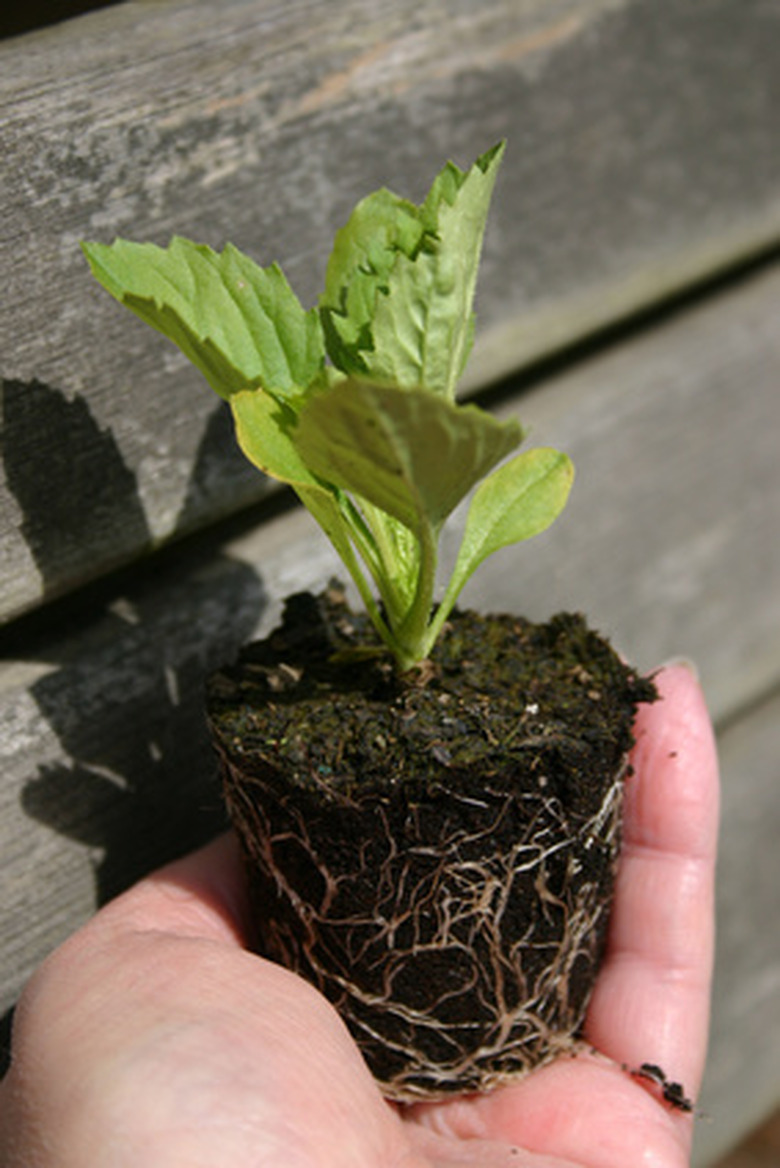Plant Seedling Identification
When you find a tiny plant in your garden, sometimes you know right away that it's a dandelion or a chickweed. You recognize the texture, the leaf shape, even the shade of green. Sometimes, however, nothing about it looks familiar. You can, of course, wait until it flowers to find out whether it's a treasure or a pest, but there are clues to any plant's identity even in the seedling stage.
Monocot Or Dicot
The first leaves a seedling sprouts are called cotyledons and the two main divisions of flowering plants differ in the number produced. Monocotyledons, as the name implies, have one seed leaf, a linear blade that is either narrow or wide. The veins run parallel to each other rather than forming a network. Lilies, grasses, iris and most bulbs are in this category.
- When you find a tiny plant in your garden, sometimes you know right away that it's a dandelion or a chickweed.
- You can, of course, wait until it flowers to find out whether it's a treasure or a pest, but there are clues to any plant's identity even in the seedling stage.
Dicotyledons, broad-leaf plants, have two seed leaves, usually rounded. The next leaves to sprout will look much more like the mature leaves of that type of plant, with a unique combination of shape, texture and color. This is a huge group of plants, ranging from magnolias to peas to sunflowers.
Leaf Shapes
Botanists have many technical terms to describe leaf shapes, but you can use the usual descriptive words such as oval, rounded, heart-shaped, sword-like and so on. The edges may be toothed, wavy, lobed or finely cut into fern-like divisions. The more characteristics you notice about each leaf, the more likely you are to make an accurate identification. Seedling leaves, however, may be less lobed or divided than mature leaves.
- Dicotyledons, broad-leaf plants, have two seed leaves, usually rounded.
- The next leaves to sprout will look much more like the mature leaves of that type of plant, with a unique combination of shape, texture and color.
Leaf Texture And Color
Notice whether the surface of your seedling's leaf is smooth, waxy, hairy or rough and whether or not the leaf veins are prominent features. Color is often a clue to a plant's identity, with each type having a particular shade of green, often influenced by the gloss or roughness of the surface texture. If you wander about your garden touching and examining leaves, you'll find many subtle differences.
Stems
The texture and color of a plant's stem can be a good diagnostic feature. A stiff stem on a plant only five or six inches high may indicate a shrub or tree seedling, especially if the surface is brown or ridged. Notice also how the leaves are arranged along the stem. Though small plants may have leaves crowded together, try to determine whether they are opposite each other in twos, in whorls of three or more or placed alternately up the shoot.
- Notice whether the surface of your seedling's leaf is smooth, waxy, hairy or rough and whether or not the leaf veins are prominent features.
- The texture and color of a plant's stem can be a good diagnostic feature.
Grasses
Grasses, like all monocots, have linear leaves but while those of iris and other monocots sprout from the base of the plant, many grasses also have side branches along the stem. The base of a grass leaf blade encircles the stem at an area called the collar. Some grasses have claw-like or hook-like projections at the collar that can be used to identify those varieties. Notice also whether the blade is smooth or hairy.
